Bradbury Wilkinson notes used during the Revolution
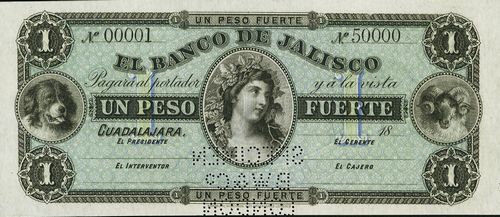
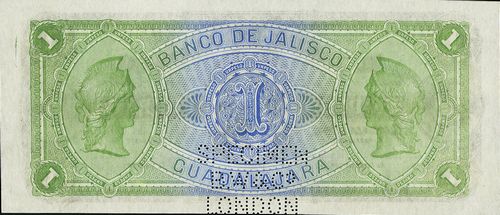 M377s $1 Banco de Jalisco
M377s $1 Banco de Jalisco
The Bradbury Wilkinson notes were ordered before the Ley General of 1897 prohibited the use of notes smaller than five pesos, so the two small denomination (50c and $1) were not put into circulation. They were used a decade and a half later when Huerta first modified the Ley General and then permitted the issue of 50c notes.
However, the bank also contacted Bradbury, Wilkinson in 1914. By this time the company was a subsidiary of the American Bank Note Company and H. Leslie Hendriks, who had formerly been the ABNC’s Resident Agent in Mexico City, was working for Bradbury, Wilkinson in London. On 26 January Hendriks told the ABNC that he had received a telegram from the Banco de Jalisco, asking for a price for 200,000 $1 notes in the old design. Hendriks was going to quote the original price (£2 17s), with payment having to be made in advance, but wanted the ABNC’s comment. The ABNC’s vice-president, D. H. Woodhull, replied that they had no objection, seeing that Bradbury Wilkinson already had the plates, but strongly advised securing payment in advance, as financial conditions in Mexico were none too good. Hendriks therefore, on 27 January, quoted the bank “Price five hundred eighty pounds in advance f.o.b. Liverpool three months”ABNC, folder 259, Banco de Jalisco (1907-1932).
By March 1914 the bank was back in communication with the American Bank Note Company.
The $1 notes are dated 20 January 1914 and were put into circulation in the following weekThe Mexican Herald, 19th Year, No. 6,723, 28 January 1914. The 50c notes are dated 1 May 1914.
Presidente
|
Aurelio González Hermosillo Aguilar was born in 1862 in Guadalajara, the son of Miguel González Hermosillo. He was a lawyer, hacendado and financier and served as President of the Banco de Jalisco and Vice-president of the Banco de Aguascalientes (in 1912). He was elected a diputado suplente to the XIX state legislature in November 1902La Voz de México, 12 November 1902 and a deputy in 1909La Gaceta de Guadalajara, 17 January 1909. In 1906 he built a large Italian style villa on the edge of Lake Chapala, designed and constructed by Angel Corsi, whom he brought from Europe. He owned the Estrella de Oro gold and silver mine in Chapala and the Hacienda de Santa Cruz del Valle, in Tlajomulco, just south of Guadalajara, that by 1818, had 6,000 hectares and produced basics such as corn, wheat and beans. He died in Guadalajara in 1929El Informador, 29 January 1930. He signed notes dated from 1908 to 1914. |
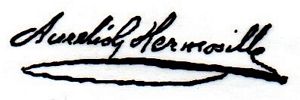 |
|
From 1890 to 1930, through L. Gas y Companía, Eugène Cuzin participated in the Compañía Industrial de JaliscoThe Compañía Industrial de Jalisco was a short-lived entity formed by multiple interested parties (Viuda e Hijos de Corcuera, Somellera Hermanos, Gonzalo & Modesto Ancira, Gas & Cogordan Co, Fortoul & Chapuy Co, and the Moreno Hermanos) with the express purpose of consolidating ownership of all factories related to textiles and paper in Jalisco, especially those near Guadalajara, in its hands. It represented the first attempt at industry domination of its kind in the area, and relied on capital fronted by Mexican, as well as Spanish and French, nationals., the Compañía Industrial de Guadalajara, the Banco de Jalisco, the Compañía de Fomento y Bienes Raíces de Guadalajara and the Compañía Petrolera La Fortune, along with other French, Spanish and Mexican partners. He was also a director of the La Experiencia, Atemajac and El Salto factories in Jalisco, and he had under his orders the Hercules factories, in Querétaro, and Santa Rosa, in Orizaba. From 1905 he lived in a house that he had built on avenida Vallarta, which became the Consulate of France following his appointment as consul on 2 June 1911. By 1907 Eugène Cuzin was already the head of La Ciudad de México, while Antoine Gas returned to France. Anyway, the brothers Louis and Antoine Gas, Eugène Cuzin and his nephew Henri Teissier continued as partners. In 1907 Cuzin was the vice president of the Circulo Francés{footnotes}El Regional, 24 December 1906. In 1912 the Cuzin family moved to Los Angeles, California, for fear of the tremors that occurred in Guadalajara during that year. They lived there for three or four months, and then returned to Guadalajara. In 1913 Eugène bought a hotel on calle 16 de Septiembre to build a new store. Cuzin decided to retire to France that year, and prepared everything for his nephew Henri Teissier to succeed him in managing La Ciudad de México, together with his brother Jean Teissier. In May 1914 the Cuzin family again left for France. With the declaration of war, on 1 August 1914, Eugène Cuzin was enrolled in the ranks of the French army, but as he was very short-sighted he did not go to the front lines, but was sent to Mexico as consul of France, with the aim of recruiting the French of Guadalajara. Eugène traveled to Guadalajara but his family stayed in Grenoble, France, with some relatives. It was not until 1916 that Eugène returned, to meet his family. Cuzin spent two years in Mexico safeguarding the interests of his business, a time when he wrote the notebooks that make up his Diary. Eugène Cuzin returned to France and remained there from 1916 to 1917. The following year, Cuzin was still a partner of La Ciudad de México in Guadalajara. Cuzin died on 20 June 1930 in Paris worn down by the Mexican revolution, the European war and work. |
 |
Interventor
|
José Prieto Rivas was born in Guadalajara on 20 February 1864. He was appointed Administrador Principal del Timbre in Guadalajara in July 1896El Tiempo, 2 July 1896. He held this post until December 1906 when he resigned, partly for his health and partly to devote himself to his own personal affairs. He intended just to take over the post of Interventor from Gómez y Velasco, as this was less onerousLa Gaceta de Guadalajara, 16 December 1906. Less than a month later he announced that he was starting a new investment company with Manuel Aldrete Espinosa. Since both were “young, intelligent, well connected and in good condition to make a success of business” the newspaper thought they were certain to prosperLa Gaceta de Guadalajara, 20 January 1907. He signed notes dated 1908 to 1914. |
 |
Gerente
| Henry Bartníng | 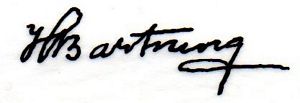 |
Cajero
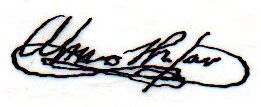 |
Issues
50c notes
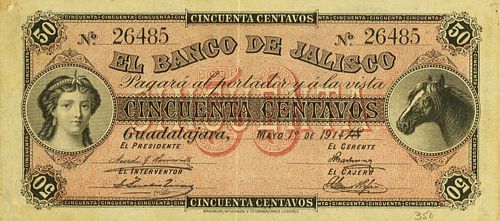
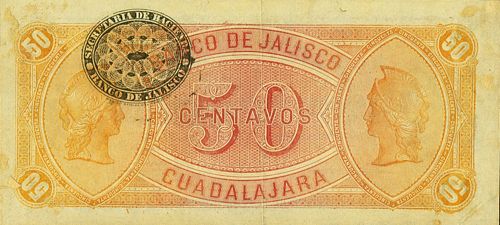 M376a 50c Banco de Jalisco
M376a 50c Banco de Jalisco
| Date of issue | Date on note | Series | from | to | Presidente | Interventor | Gerente | Cajero | comment |
| 1 May 1914 | 00001 | 50000 | Hermosillo | Rivas | Bartning | include numbers 00015 to 49264 |
04717 is overprinted 'MUESTRA'.
$1 notes
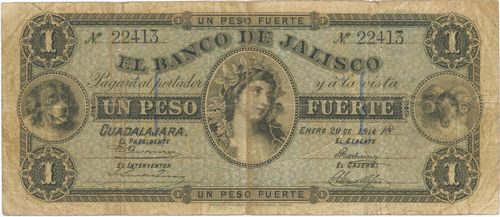
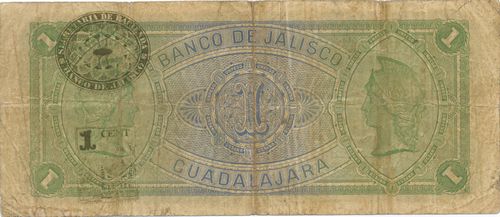 M377a $1 Banco de Jalisco
M377a $1 Banco de Jalisco
| Date of issue | Date on note | Series | from | to | Presidente | Interventor | Gerente | Cajero | comment |
| 20 January 1914The Mexican Herald, 19th Year, No. 6,723, 28 January 1914 | 20 January 1914 | 00001 | 50000 | Cuzin | Rivas | Bartning | include numbers 00345 to 47727 |
The Banco de Jalisco suspended its operations in Guadalajara at the begining of June. According to a newspaper report it was at first believed that this was due to financial difficulties, but the manager explained that the bank had been closed by order of the government because it had failed to deliver $600,000 in connection with the internal loan that Huerta floated several months beforeEl Paso Herald, 7 July 1914. So these will have had a short period for issue.

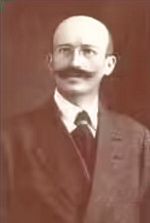 Eugène (Eugenio) Cuzin was possibly a cousin of the Gas brothers. In 1890 he was sent from Jausiers, France, to work in the La Ciudad de México department store and became one of the most important businessmen and retailers in Guadalajara.
Eugène (Eugenio) Cuzin was possibly a cousin of the Gas brothers. In 1890 he was sent from Jausiers, France, to work in the La Ciudad de México department store and became one of the most important businessmen and retailers in Guadalajara.